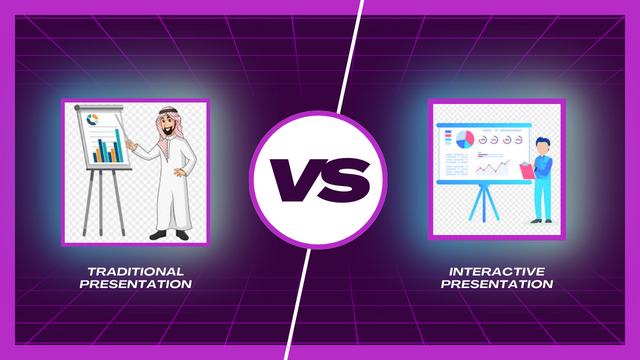Difference Between Traditional and Interactive Presentations

In the world of presentations, there are two main styles: traditional and interactive. Both have their own strengths and weaknesses. Choosing the right one can make a big difference in how well your message gets across. This guide will help you understand each style better, so you can decide which one to use for your audience.
What is a Traditional Presentation?
A traditional presentation is when a speaker uses a set of slides to share information. These slides often have text, images, and charts. The presenter explains each slide in order. This style is common in classrooms, meetings, and conferences.
Advantages of Traditional Presentations
- Simplicity: Traditional presentations are easy to follow. The clear structure helps the audience understand the message.
- Control: The presenter controls the content and flow, making sure all important points are covered.
- Preparation: With set slides, the presenter can practice and prepare well.
Disadvantages of Traditional Presentations
- Passivity: The audience just listens, which can lead to boredom.
- Limited Interaction: There’s little chance for the audience to participate, making it feel one-sided.
- Inflexibility: It’s hard to change the presentation on the spot based on audience feedback or questions.
What is an Interactive Presentation?
Interactive presentations get the audience involved. This can include live polls, Q&A sessions, group activities, and multimedia elements. The aim is to create a more engaging experience.
Advantages of Interactive Presentations
1.Engagement: Interactive elements keep the audience interested and involved.
2.Feedback: Real-time feedback allows the presenter to adjust the presentation.
3.Retention: People remember information better when they participate actively.
Disadvantages of Interactive Presentations
1.Complexity: Planning an interactive presentation takes more time and effort.
2.Unpredictability: Audience participation can make things unpredictable and harder to manage.
3.Technical Issues: Relying on technology can lead to problems if something goes wrong.
Comparing Traditional and Interactive Presentations
Scenario 1: Traditional Lecture
Dr. Smith, a history professor, uses a traditional style for her lectures. She prepares slides with important dates and events. Her students take notes while she talks.
Strengths: Dr. Smith’s lectures are well-organized and cover all the material. Students can focus on listening and taking notes.
Weaknesses: Students might get bored and stop paying attention because they are just passive listeners.
Scenario 2: Interactive Workshop
Mr. Johnson, a corporate trainer, uses an interactive style for his leadership workshops. He starts with an icebreaker, then moves on to group discussions and role-playing exercises. He also uses live polls to check understanding.
Strengths: Mr. Johnson’s workshops are fun and engaging. Participants are active, which helps them remember the material better.
Weaknesses: The workshops require careful planning and can be hard to keep on track. Technical issues can disrupt the flow.
Real-World Examples of Successful Presentations
- TED Talks: Many TED Talks mix traditional and interactive elements. Speakers use slides but also tell stories, ask questions, and use humor to keep the audience engaged.
- Sales Pitches: Sales presentations often include product demos and Q&A sessions. This interaction helps build a connection with potential clients.
- Educational Workshops: The "Flipped Classroom" model lets students review material at home and engage in activities in class, which deepens their understanding.
Tips for Creating Effective Presentations
No matter which style you choose, these tips can help make your presentations better:
1.Know Your Audience: Tailor your content and style to the audience’s interests and knowledge level.
2.Keep it Visual: Use images, charts, and videos to complement your message.
3.Practice: Rehearse multiple times to ensure a smooth delivery.
- Engage Early: Start with something interesting to capture attention right away.
- Encourage Interaction: Even in traditional presentations, ask questions or invite comments to engage the audience.
Conclusion: Which is Better?
The choice between traditional and interactive presentations depends on your audience, setting, and content. Traditional presentations are reliable and good for detailed information. Interactive presentations are more engaging and adaptable, great for involving the audience.
Often, the best approach is a mix of both styles. By adding interactive elements to a traditional framework, you can keep the strengths of each method and make your presentation both informative and engaging. By understanding these styles and planning accordingly, you can deliver your message effectively and leave a lasting impression.
Greetings friend @muthu1010
Welcome to Steemit, we are pleased that you have integrated into the platform. We hope you find a space to share original and interesting content.
I invite you to fulfill the achievements in the Newcomers community.
https://steemit.com/hive-172186/@cryptokannon/newcomers-achievement-program
I recommend that you learn about the internal policies that you must take into account when publishing content on Steemit.
https://steemit.com/faq.html#What_is_considered_spam_or_abuse
On the other hand, it is important to let you know that the use of artificial intelligence is not allowed to generate content.
I wish you success.